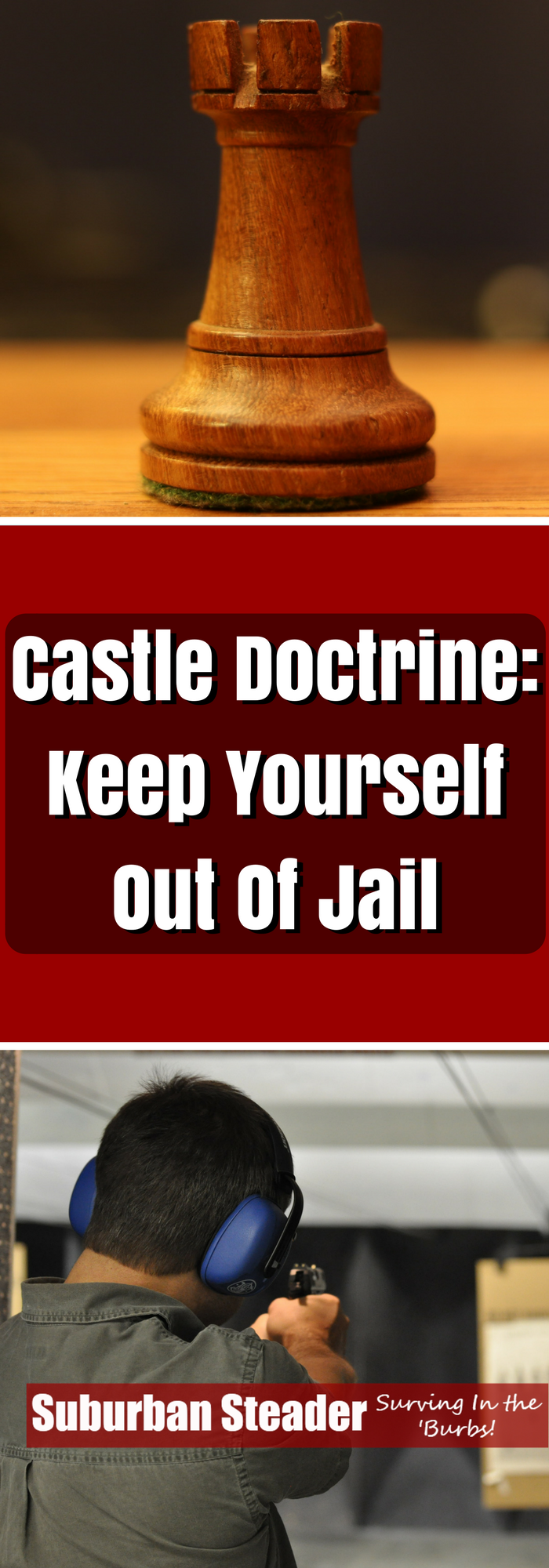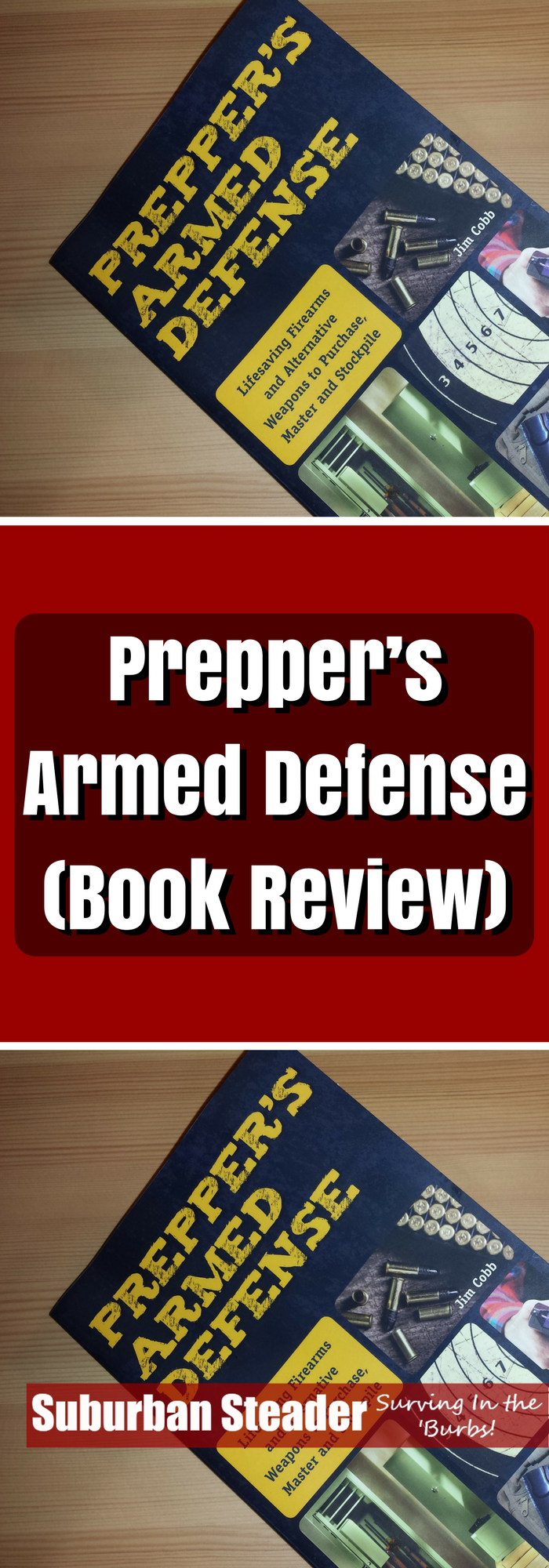Castle Doctrine: Keep Yourself Out Of Jail
One of the major concerns facing the prepper and homesteader community is self-defense. Prepper and homesteader sites have articles on how to properly shoot a firearm or how to pick from the various survival knife brands. However, many blogs (my blog Living Dead Prepper is guilty as well) tend to neglect the legal aspects of self-defense. This negligence is a mistake though as you’ll need to have at least a working knowledge of legal self-defense. The notable exception would be a total collapse of society. This article will give you a starting point in learning the Castle Doctrine (CD) and the Modified Castle Doctrine. Both of these doctrines are the primary US self-defense laws.
LEGAL DISCLAIMER: THIS ARTICLE IS GENERAL INFORMATION AND IS NOT LEGAL ADVICE. READ YOUR STATE’S SELF-DEFENSE LAWS TO PROPERLY UNDERSTAND YOUR STATE’S HOME SELF-DEFENSE STATUTE. BETTER YET, CONTACT AN EXPERIENCE LOCAL ATTORNEY.
The Castle Doctrine
The below principle should always guide you when it comes to protecting yourself and your family:
I’d rather be judged by twelve than carried by six.
You obviously want to avoid being judged by twelve if at all possible in the first place. In that sense, you owe it to both yourself and your family to learn your state’s self-defense laws.
You need to understand common law self-defense to best understand CD. Let’s address common law self-defense. (Self-Defense)
An Overview of Common Law Self-Defense
Please note: Common law is based upon previous court ruling and not written statutes.
Self-defense is an affirmative defense which allows you to reasonably use force against an intruder, or other criminals, without fear of arrest.
To show legal self-defense you must show the following:
- Immediate Threat: You must be, at the moment you or a loved one are attacked, afraid that you are in danger. Self-defense cannot be claimed if you drive ten miles to shoot someone who threatened you over the phone.
- Proportional Response: The use of force must be proportionate to the danger that you would reasonably think may happen to you or others if you were to do nothing. For example, an average sized adult would likely be guilty of murder if they shoot an unarmed, elderly female who is threatening to beat them up.
Home Self-Defense Doctrines
The Castle Doctrine and its variants evolved from the above self-defense laws. As a result, many of the common law self-defense concepts, like “Proportional Response” were put into legal statutes.
Castle Doctrine Overview
The predominant home self-defense laws in the USA are CD and Modified CD. Keep in mind that each state may have different variants of the CD. Many states have a different limitation on when, where and how an individual whose state is covered by the Castle Doctrine can legally use self-defense. This explanation of the Castle Doctrine will be based upon a general overview of the CD. I’ll not address any particular state’s specific Castle Doctrine statute.
Below are the main elements of the Castle Doctrine:
- Location: You must be physically inside where you live. (e.g. house, apartment, mobile home, etc.). You can’t shoot a burglar, on your front law, who is running away from you.
- Breaking and Entry: The bad guy must have either broken into your home or attempted to break into your home. The CD would not apply if you shoot someone who is breaking into a shed in your yard.
- Justification: Was your use of force reasonable? As explained earlier, reasonableness is based upon your particular situation. For example, it may not be considered reasonable to shoot a drunk who has wandered into your house passed out on your couch.
- Whether a shooting was reasonable can be dependent upon the district attorney, judge, jury and the state where the incident occurred.
- Duty to Retreat: Historically, to use the Castle Doctrine you must have first shown that you were unable to run to safety. This means that to use the CD defense you could only use deadly force as a last resort. The duty to retreat is currently only required in around half of the US States. Approximately half of the other states use the Modified Castle Doctrine.
The Modified Castle Law Doctrine
Under the Modified CD, you don’t have to retreat from an intruder when you’re in your house, yard or workplace. In some states, your personally owned vehicle is covered under Modified CD. Thus, under the Modified CD, you can “Stand Your Ground,” in your residence and use deadly force without first seeing if there were avenues to escape.
Conclusion
Ultimately, a fundamental knowledge of your state’s home Castle Doctrine laws and using common sense are your best self-defense tools. You definitely should know whether your state uses the traditional Castle Doctrine or the Modified Castle Law Doctrine.
Above all, your self-defense strategy needs always to be based upon what is best for that particular situation. For example, just because you don’t have to retreat doesn’t mean that you should never attempt to run for safety.
You need to ask yourself: “Is is safer for me to run, hide, retreat or confront?”
Your final decision on whether to fight or flee ultimately needs to be based upon what is best for both yourself and your family or friends.
References:
http://criminal.findlaw.com/criminal-charges/may-i-shoot-an-intruder.html

